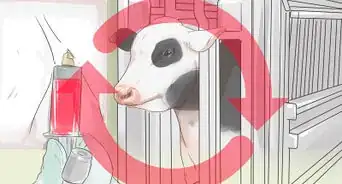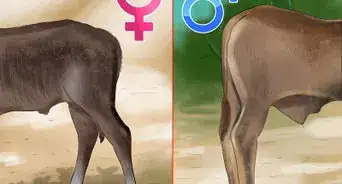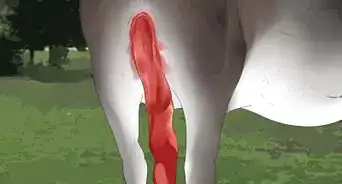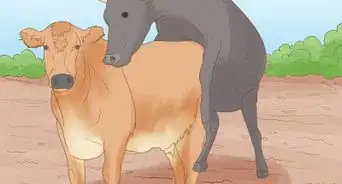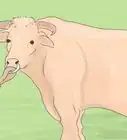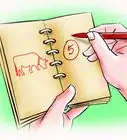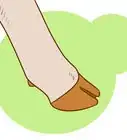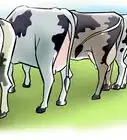This article was co-authored by Karin Lindquist. Karin Lindquist earned a BSc in Agriculture as an Animal Science major from the University of Alberta, Canada. She has over 20 years of experience working with cattle and crops. She's worked for a mixed-practice veterinarian, as a sales representative in a farm supply store, and as a research assistant doing rangeland, soil, and crop research. She currently works as a forage and beef agriculture extension specialist, advising farmers on a variety of issues relating to their cattle and the forages they grow and harvest.
This article has been viewed 165,202 times.
It's as simple as this: Put grass in front of cow, put bull behind cow. In other words, natural breeding is simply putting a herd bull out with a herd of cows or heifers and letting him do his job for a few weeks or couple months, then pulling him out again.
Steps
-
1Purchase a good herd bull. Make sure the bull is a calving-ease bull if you are wanting to naturally breed heifers, or a herd bull that is selected to improve your cow-herd, not disprove it. Look at the breed[s] your cows are made up of and choose your bull from there. You may want to purchase a purebred bull to start a crossbreeding operation, or a bull of the same or similar breeding as your cows to get calves suitable for sale to market or as replacements. Whatever the choice, make sure it's a wise one that you won't regret during calving season.
- Conformation is extremely important in the selection of a good bull for your cows and heifers. If you get a bull that has poor conformation, he either won't last very long or will sire inferior calves.
- Purchase the bull a couple weeks or so before breeding season, especially if it's a yearling bull that has been on a feed-testing station prior to being purchased. This way the bull can get used to your farm/ranch and you can start getting him on a proper roughage diet instead of the grain diet he's been tested on.
- The exception to this is if the bull has been tested on forage, not grain, which is becoming more and more common-place due to need for more cattle to be raised on grass alone.
- Remember the bull-to-cow/heifer ratio when purchasing a bull. For most herds, the ratio is 1 bull to 25 to 50 cows, depending on the pasture size and age of the bull. Cow herds in large enclosures will often require a smaller bull:cow ratio than if that cow herd were in a smaller enclosure.
- Mature bulls tend to settle more cows than yearling or virgin bulls, so you will need to accommodate for that as well. A mature bull will typically mate with 30 to 50 cows per season, whereas with a yearling bull, 10 to 25 cows or heifers is sufficient.
-
2Get the bull semen tested. It is highly recommended you get this done before you purchase the bull otherwise you will end up paying much more than what the bull is actually worth. A qualified large animal veterinarian will do the semen testing for you.
- If you get the bull tested after you purchase him and find out that he's a dud, you'll have to sell him. The price you get for your bull will be quite a bit less than what you initially paid for.
Advertisement -
3Bring the bull to your farm or ranch. Put him in a corral with good, sturdy fencing, feed and water already accessible. He will be a little antsy at first, but should settle down after a few days.
- Depending on your herd health management criteria, you may want to or have to quarantine the bull to check for potential health concerns with sexually transmitted diseases such as Trichomoniasis, Bovine Viral Diarrhea, Vibriosis, etc. If that's the case you will have to quarantine the bull for three to four weeks prior to letting him in with your cows and/or heifers to make sure he tests negative for any STDs that could cause damage to your herd.
-
4Put him in with your cows or heifers at the start of breeding season. You also have the choice of putting your cows or heifers in with the bull, but only if the corral the bull is in is large enough. You don't want to have a pasture or corral that is too small that quickly turns into a dirt wallow, nor a pasture too big so that the bull gets too worn out or cannot successfully settle all your cows or heifers by himself. If the latter is the case, consider purchasing another bull, ideally one that is not the same age as the first one you purchased.
-
5Keep the bull in for as long as your breeding season entails. This can range from 45 days to 120 days. Ideally, you should have your breeding season between 45 to 60 days, but of course this varies between farm to farm and ranch to ranch.
- Check the breeding herd[s] regularly to check up on the bull's progress with breeding the cows/heifers. This way you can watch and see whether the bull is actively breeding his females or if he's more interested in the grass than his girls.
- Often spending time (at least a half hour to an hour) watching the herd will give you a good idea of how well and how interested your bull is in your cows.
- If you're finding that your new bull isn't really doing much or anything, you can hypothesize that either he is a "night rider" (he chooses to be more active breeding his girls at night), has some sort of injury you haven't noticed yet that is inhibiting his breeding ability, or is simply not interested (some producers call these sort of bulls "gay bulls" or "gay breeders").
- Often spending time (at least a half hour to an hour) watching the herd will give you a good idea of how well and how interested your bull is in your cows.
- Check the breeding herd[s] regularly to check up on the bull's progress with breeding the cows/heifers. This way you can watch and see whether the bull is actively breeding his females or if he's more interested in the grass than his girls.
-
6At the end of the breeding season, remove the cows from the bull. The best and safest way to pull the bull from the herd is not to remove the bull himself from the herd, but to pull the cows from the bull. You can do this by herding the entire herd into the bull's pen, then herding the cows out, leaving the bull in the pen.
- Some producers choose to leave the bull with the cows until the start of the calving season so that he isn't going to be alone for most of the year. You need to make sure to pull the bull at the end of the breeding season though for a period of time so that you can detect any open cows or heifers for culling purposes. Ultimately, though, the time you wish to pull the bull from the cow herd after breeding season is up to you.
Community Q&A
-
QuestionHow old is a bull calf when he can breed with heifers?
 Community AnswerA year old.
Community AnswerA year old. -
QuestionCan a bull serve the same cows for more than a year, or do farmers use a different bull each year?
 Community AnswerA bull can be used to service the same cows every year so long as he isn't breeding his own daughters. When that bull's daughters reach breeding age (~15 months), a different bull will need to be used to avoid inbreeding. The lifespan of a bull in a breeding herd can range from 2 to 15 years, and all depends on his temperament, libido, and fertility.
Community AnswerA bull can be used to service the same cows every year so long as he isn't breeding his own daughters. When that bull's daughters reach breeding age (~15 months), a different bull will need to be used to avoid inbreeding. The lifespan of a bull in a breeding herd can range from 2 to 15 years, and all depends on his temperament, libido, and fertility. -
QuestionIs there a chemical in drinking water that can keep cows from breeding?
 Community AnswerNo, but there are minerals that, if in deficient or toxic qualities, can cause sub-fertility in cows. For example, deficiency in selenium or copper will cause low fertility rates in your cattle. Have your water and feed tested to see whether there are any deficiencies and/or toxicities. It might also be a good idea to talk with your veterinarian about other possibilities.
Community AnswerNo, but there are minerals that, if in deficient or toxic qualities, can cause sub-fertility in cows. For example, deficiency in selenium or copper will cause low fertility rates in your cattle. Have your water and feed tested to see whether there are any deficiencies and/or toxicities. It might also be a good idea to talk with your veterinarian about other possibilities.
Warnings
- A bull can be even more dangerous if he doesn't see you as The Boss.⧼thumbs_response⧽
- Be aware of a bull during breeding season. Bulls can be and often are dangerous during this time of year, since he feels he has a harem to protect and may see you as competition that needs to be dealt with straight away.⧼thumbs_response⧽
- Don't take it for granted that a bull can do his job, and think that you don't need to watch him do his job. You will always need to check if he's actually getting the cows bred or whether he's more interested in keeping his belly full.
- The only way to find this out is when you are getting the cows pregnancy-checked after breeding season is over.
⧼thumbs_response⧽
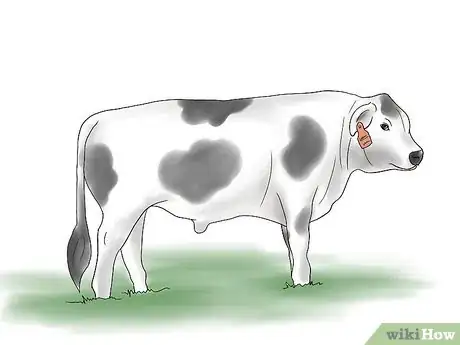
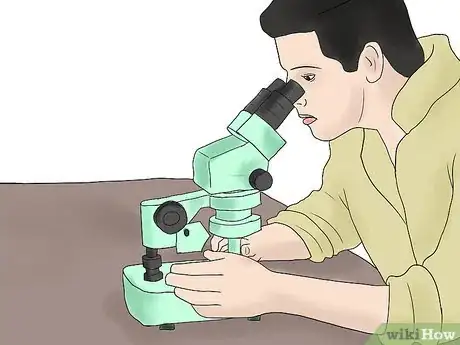
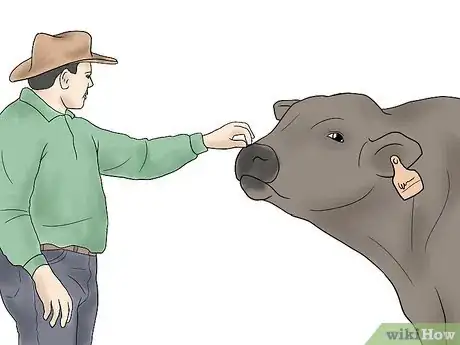
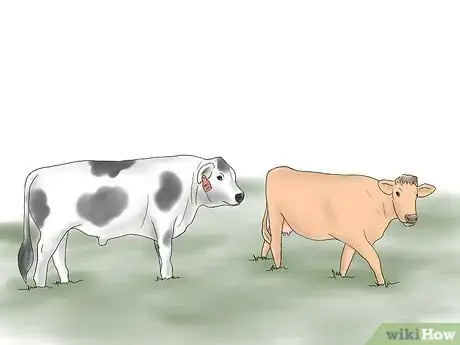
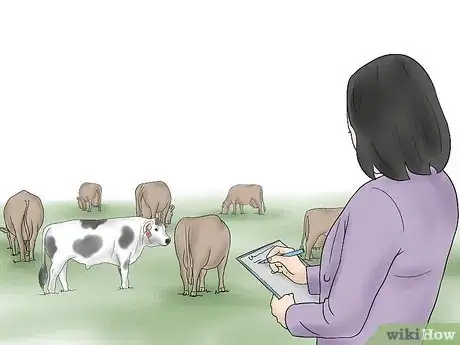
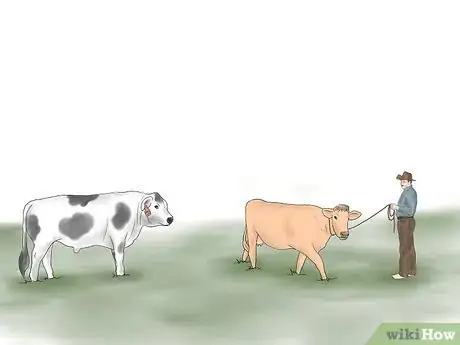
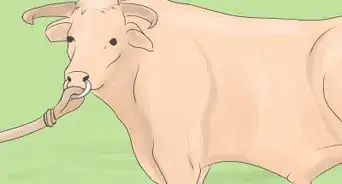
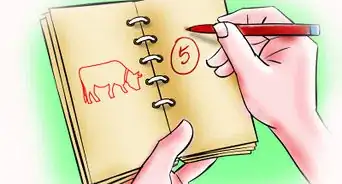
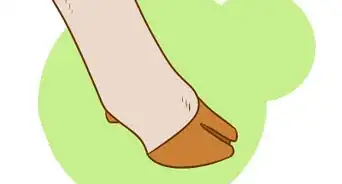
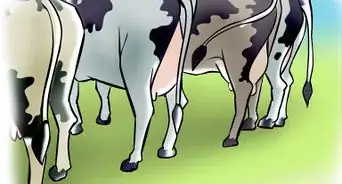



-in-Cattle-Step-6.webp)
